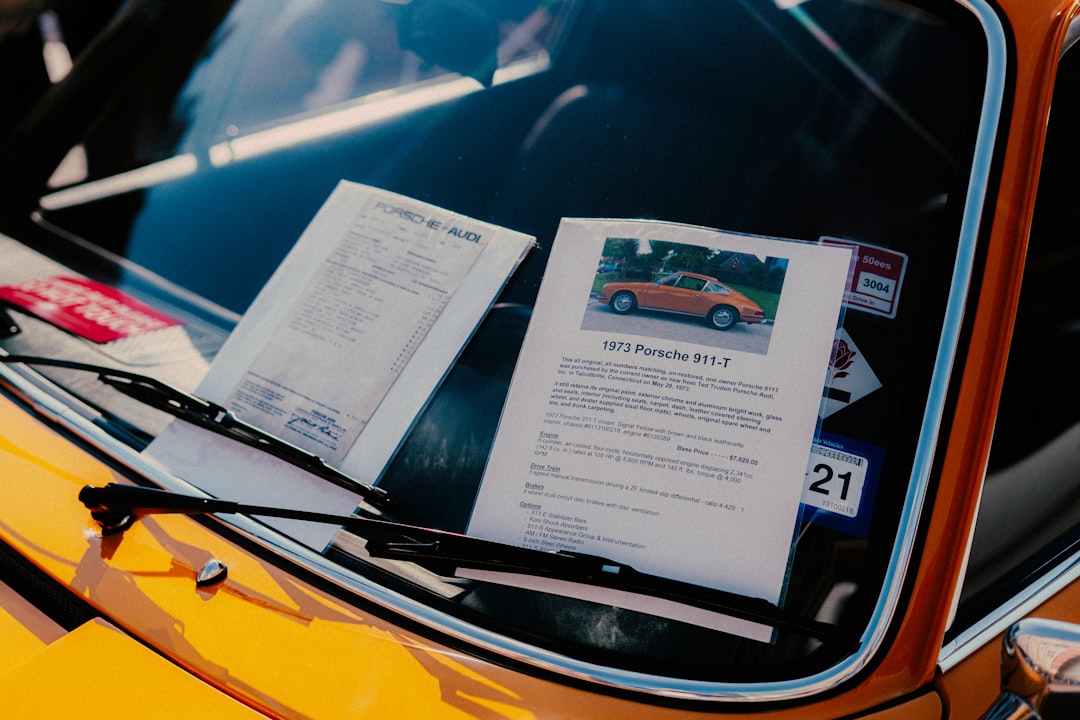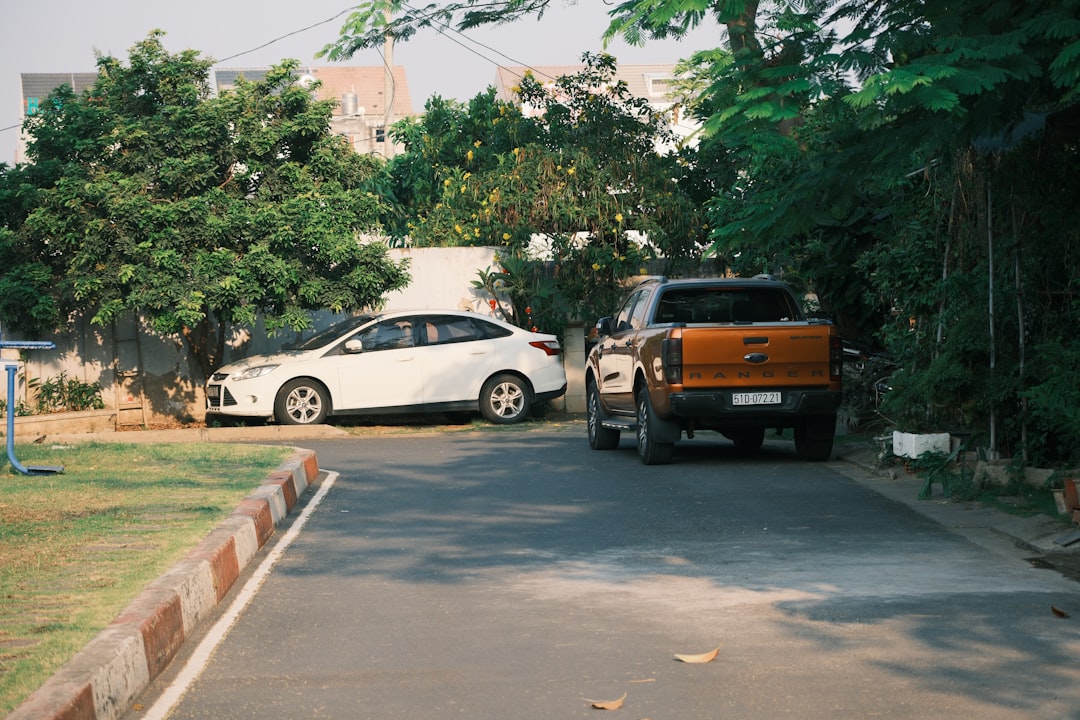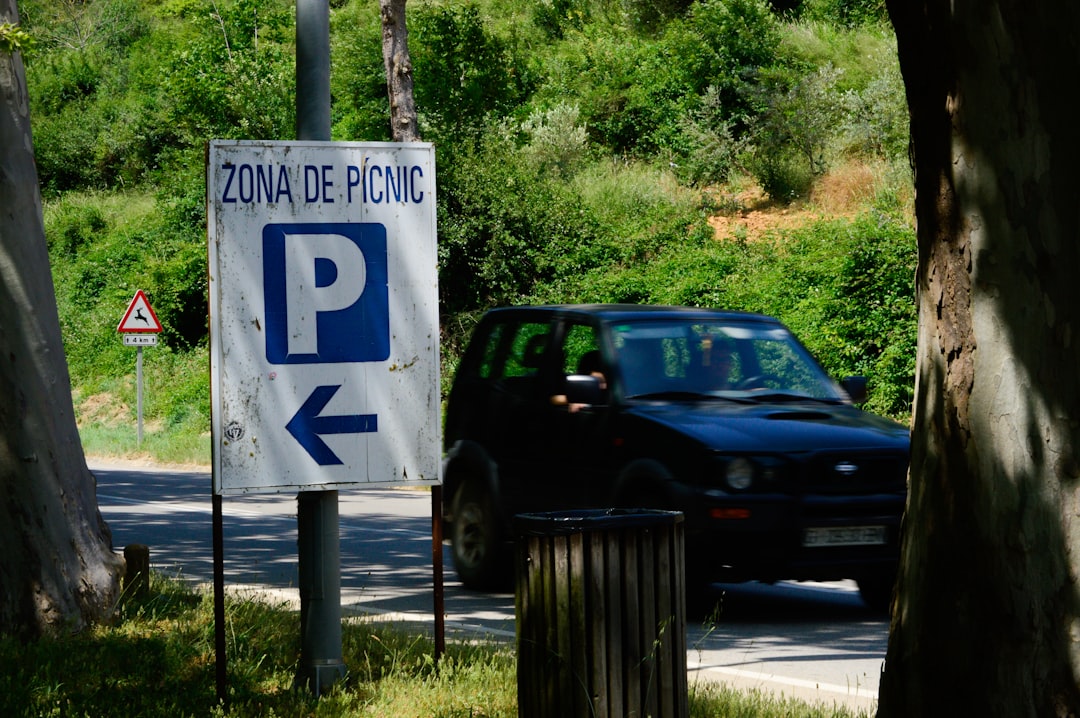

Engage prospects with a scan and streamline customer engagement with FREE QR code marketing tools by Sona – no strings attached!
Create a Free QR CodeFree consultation

No commitment

Engage prospects with a scan and streamline customer engagement with FREE QR code marketing tools by Sona – no strings attached!
Create a Free QR CodeFree consultation

No commitment
QR codes have evolved from a novelty to a strategic powerhouse in bridging offline engagement with online action. For vehicle registration services, QR codes represent a frictionless and highly effective way to boost lead capture, streamline the registration process, and enhance customer convenience without requiring an app download or complex setup.
The pressure to modernize is more acute than ever for car dealerships, DMVs, and fleet managers. The digitization of traditionally paper-heavy workflows often leaves gaps that frustrate both service providers and customers. Prospects engage with printed materials without ever making it into your tracking systems, which leads to missed opportunities. Digital registration, mobile renewals, and smartphone-first journeys are now standard expectations, yet many organizations struggle to connect offline behaviors with online outcomes. QR codes offer a clear path forward: turning forms, mailers, or signage into real-time gateways that capture every interaction and improve offline attribution, opening up new opportunities for renewal, appointment booking, document uploads, and status checks.
Organizations that embed QR codes across the vehicle registration lifecycle are discovering how to minimize friction, accelerate conversions, and surface high-intent leads that were previously hidden. By removing obstacles and enabling measurable engagement from physical media, they move toward simplified user journeys, better attribution, and more reliable revenue streams. The sections below show how to put QR strategies to work and drive measurable results.

One common challenge for vehicle registration services is missing high-value prospects who engage with print or in-person touchpoints yet never make it into your CRM. This creates lost opportunities, fragmented records, and a limited view of what actually drives demand. QR codes bridge the gap between physical touchpoints and digital outcomes, making it easier to capture leads, deliver instant information, and guide vehicle owners through their registration journey.
The key is to align QR deployment with a clear business outcome. If your goals include faster online completions, fewer manual entries, or more appointment bookings, QR codes can transform outdated analog processes like paper forms, printed brochures, and manual sign-up sheets into digital entry points that automatically log every interaction. A customer who scans a code on a window sticker or mailer and completes a prefilled form becomes a tracked, nurture-ready lead instead of a ghost interaction.
For example, swapping out manual sign-up sheets for a QR-driven digital form at a dealership captures more leads with less friction and supports vehicle acquisition. Sales or F&I staff can direct customers to scan a code to start their registration, and the system immediately logs the interaction, pre-qualifies the contact, and triggers the next step in your workflow. Modern tools like Sona QR support dynamic code generation, CRM integration, and journey tracking, ensuring each scan creates an actionable data trail.

Vehicle registration providers often lack visibility into who engages with printed reminders, mailers, or signage. Without a mechanism to bring those interactions online, potential leads remain unknown and unpursued. QR codes solve this problem by turning every physical surface into a direct path to digital action, including QR codes for cars.
In this vertical, speed and accuracy are critical. Drivers want to renew quickly, upload documents without confusion, and check status without waiting on hold. Providers want to eliminate errors, shorten cycle times, and attribute results to specific channels. QR codes align to both sides of the equation: they simplify customer actions and illuminate performance for teams.
Appointment cards, DMV signage, dealer paperwork, and service-bay posters are high-frequency assets in this industry. Adding QR codes to them converts passive materials into measurable demand drivers so you can attribute outcomes to specific campaigns and optimize where it matters most.

Choosing the right QR format helps you solve real operational problems and deliver a better experience. In vehicle registration, a few formats stand out for their ability to accelerate decision-making, simplify communication, and keep data accurate.
Dynamic QR codes are particularly useful because they let you change destinations as requirements evolve and provide complete tracking. This ensures compliance pages, document checklists, and appointment links always stay current without reprinting assets. Whether you serve individual owners or manage fleets, a centralized platform like Sona QR helps you generate, edit, and monitor codes in one place.
When in doubt, default to dynamic codes for campaign assets that need tracking, testing, or future edits. Static codes can be appropriate for evergreen resources like a general help page, but they limit flexibility and insight.
Many vehicle registration providers miss key upsell, cross-sell, or renewal windows because offline engagement signals are not captured. The best approach is to deploy QR codes at obvious, high-traffic touchpoints where your audience already interacts with your brand. This ensures every moment of interest is measured and activated.
Think about your physical and mailed materials as top-of-funnel assets that need a digital onramp. If you place a code on a temporary tag, an inspection certificate, or a courtesy reminder letter, you transform a passive artifact into a live conversion point that can qualify and route the customer in real time.
By strategically embedding QR codes across these touchpoints, vehicle registration providers can turn unknown interest into attributable, nurturable leads and reduce the risk of customers churning at the last mile.

Traditional registration processes are prone to abandonment. Drivers and fleet managers often browse documentation or take home a printed guide but do not complete the required forms. QR codes resolve this by making the next step as easy as a scan and by ensuring every action is captured for follow-up.
Each use case below aligns with a common customer interaction and a measurable outcome. Deployed together, they create a connected journey that shortens cycle time and increases satisfaction. Explore automotive strategies.
These scenarios help surface intent that would otherwise go undetected. Your teams can identify high-priority leads, send nudges for incomplete tasks, and offer related services like emissions testing appointments or document assistance.
Every QR scan is a signal. It indicates a topic of interest, a stage in the journey, a physical location, and often the urgency of the need. By deploying multiple QR codes across touchpoints and tagging them appropriately, you can segment your audience automatically and power precise retargeting and follow-up campaigns. See Sona’s intent retargeting for tactics.
The goal is to match outreach to intent. A driver scanning a renewal notice needs a different path than a first-time registrant scanning a dealer poster. Segmenting by action, location, and timing enables you to communicate with relevance and improve conversion rates across email, SMS, and paid media.
For vehicle registration services, useful distinctions include first-time registrants vs. renewals, personal vehicles vs. commercial fleets, and walk-in vs. scheduled appointments. These segments map directly to different messages, offers, and service-level expectations.
QR codes are more than convenient links. They act as connectors across offline and digital campaigns, enabling real-time engagement and richer data collection in every channel. When you add them consistently, you create a unified journey that captures intent wherever it originates.
Start by identifying your highest-volume channels and assets. For many providers, these include dealer paperwork, DMV signage, renewal mailers, inspection sites, and community events. Adding QR codes to each creates a measurable pathway from interest to action and provides insights on which placements deliver the best results.
A centralized platform like Sona QR lets you manage all codes from a single dashboard, monitor cross-channel performance, and sync scan data with your CRM and ad platforms. This replaces siloed experiments with a coordinated strategy that compounds over time.
Planning and execution determine whether QR codes become a growth lever or just another asset on the shelf. Use the following steps to launch a campaign that captures demand at the source and converts it into measurable outcomes.
Identify the single most important business outcome for this campaign before creating any codes. For example, your goal might be to increase digital renewal completions for expiring registrations, reduce in-office form filling by shifting customers to mobile, or streamline compliance status checks for fleets.
Most vehicle registration campaigns benefit from dynamic QR codes. Dynamic codes enable tracking, retargeting, and destination updates, which are essential in a regulatory environment where forms and instructions can change.
Design for scannability and intention. The visual frame, nearby copy, and the physical context all influence whether someone scans and completes the next step.
Roll out codes where they can have immediate impact. Start with high-traffic and high-intent placements, then expand as you learn.
Treat QR codes like any performance channel. Track, diagnose, and iterate to improve scan-to-conversion rates over time.
Organizations that operationalize this process see a significant uptick in captured leads and gain closed-loop insight into the paths that drive conversions. Over time, the data will guide more efficient spend, better staffing, and a smoother customer experience.
For vehicle registration teams, the inability to connect offline engagement to completed registrations can stall growth and obscure ROI. QR tracking fixes this by creating a measurable link between the physical world and your digital workflows. When properly instrumented, each scan becomes a data point that explains what prompted action, when it occurred, and how it influenced the journey.
Traditional reporting often stops at the landing page. To prove impact, you need to see the full chain from scan to conversion. That includes which mailer batch generated the most renewals, which office signage reduced in-person wait times, and which messages drove document uploads. With Sona QR and Sona.com, an AI-powered platform for identity resolution and revenue attribution, it is possible to capture scan events, enrich contacts, and attribute revenue across channels.
This measurement capability turns QR codes into a performance channel you can manage, optimize, and forecast. Instead of guessing whether a poster or mailer helped, you will know which assets converted and how to repeat the results.
QR performance improves when you treat each scan as the start of a guided journey. The tips below prioritize the media and workflows most common in vehicle registration and focus on automation, attribution, and staff enablement.
Select the practices that map to your goals and local regulations. For example, if your state requires specific disclosures, host those dynamically so updates do not break your printed assets.
Creative deployment ideas include QR-enabled temporary tags that link to a personalized checklist for first-time registrants and QR codes on invoices that open a renewal payment page with prefilled vehicle details. These small interventions reduce friction and drive measurable conversions.

Many organizations discover that generic website analytics fail to capture critical insights from physical touchpoints. QR codes add the missing link by making each offline interaction visible, attributable, and actionable. The examples below show how providers are using QR codes to capture more demand and improve service quality.
Consider how the same patterns can apply to your offices, partner dealerships, and fleet customers. Even small pilots can validate lift in completions or reductions in wait time, which helps secure support for broader rollouts.
By studying these examples, teams can see that QR codes are not just a convenience. They are a way to recover lost leads, surface intent earlier, and tie physical engagement to digital outcomes that drive revenue and efficiency.
Turning QR codes into a reliable growth lever requires attention to both strategy and execution. The following guidance reflects what works consistently across vehicle registration programs and the avoidable mistakes that tend to limit results.
Focus on alignment between the physical environment and the digital destination. If the code promises a 2-minute renewal, the landing page must deliver a fast, mobile-first experience. Likewise, if a code is placed in a quick-service lane, the action should be achievable while standing and with one hand.
When paired with modern platforms like Sona QR and Sona.com, these practices turn QR scans into a steady stream of measurable engagement. You can close visibility gaps, follow up with genuinely interested customers, and ensure that no opportunity is missed simply because a form was never submitted. This digitized approach positions your operation at the forefront of service innovation, increasing both customer satisfaction and operational efficiency.
Ready to bridge your offline touchpoints with digital intelligence? Start by generating your first dynamic codes, instrumenting a single high-traffic use case, and connecting scans to your CRM. With a focused strategy and the right tools, your team can turn every moment of interest into measurable progress toward renewal, compliance, and revenue. Sona QR makes it easy to create, manage, and track QR campaigns in minutes, and Sona.com helps attribute scans to outcomes so you can optimize with confidence. Start creating QR codes for free.
QR codes have revolutionized vehicle registration services by transforming traditional paperwork and outreach into seamless, trackable lead generation tools. They enable agencies to capture qualified leads effortlessly, streamline customer interactions, and deliver faster, more convenient registration experiences. Imagine instantly knowing which campaigns drive the most registrations and being able to optimize them in real time—maximizing both customer satisfaction and operational efficiency.
With Sona QR, you gain the power to create dynamic, trackable QR codes that can be updated instantly without the need to reprint materials. Every scan connects directly to valuable data, helping you identify high-intent prospects and improve your registration processes. Don’t miss out on turning every interaction into a measurable opportunity.
Start for free with Sona QR today and transform how you capture leads and serve customers in vehicle registration services.
You can register a new vehicle by scanning QR codes placed on dealership paperwork, showroom posters, or temporary tags that link to mobile-friendly registration forms, which reduce form abandonment and log your information directly into the system.
To renew your vehicle registration, scan a dynamic QR code found on renewal notices or mailers that directs you to a personalized page where you can complete payment and submit required documents quickly.
Required documents can be uploaded through QR code links that provide checklists and upload portals, typically including proof of insurance, identification, and vehicle information as indicated on the digital forms accessed via the QR codes.
You can check your vehicle registration status by scanning QR codes on window decals, inspection stickers, or service receipts that lead to self-serve status portals showing current progress and next steps.
Yes, some QR codes link directly to app download pages tailored to your device, supporting mobile-first registration processes as mandated by certain states or agencies.
QR codes bridge offline and online engagement by digitizing paper workflows, capturing leads instantly, reducing errors, enabling real-time updates, and providing measurable data to improve customer convenience and operational efficiency.
QR codes are commonly placed on dealership paperwork, DMV signage, renewal mailers, temporary tags, inspection stickers, appointment cards, invoices, receipts, and out-of-home advertising near high-traffic vehicle-related locations.
Dynamic QR codes are preferred because they allow destination updates without reprinting, track scan data, and support retargeting, while static codes are used for evergreen links without tracking needs.
By converting physical materials like forms and mailers into digital entry points, QR codes capture every interaction automatically, logging prospects into CRM systems for follow-up and reducing lost opportunities.
Providers can segment audiences based on scan behavior, location, and timing to create targeted retargeting campaigns, automate follow-ups, and personalize communication through CRM and ad platform integrations.
Design QR codes with clear, action-oriented calls to action, ensure strong contrast and adequate size for easy scanning, test in real-world conditions, and brand them consistently to increase scan rates and user confidence.
QR codes enable customers to start registrations, upload documents, or check status on their smartphones before or during visits, streamlining processing and lowering in-office wait times.
Yes, dynamic QR codes can instantly update their linked content, forms, or instructions without needing to reprint physical materials, ensuring customers always access current information.
Success is tracked through scan counts, location and timing data, form completions, appointment bookings, and revenue attribution using analytics platforms that integrate with CRM systems.
Avoid low-contrast or poorly placed codes, use static codes for time-sensitive content, neglect staff training to promote QR use, and fail to integrate scan data with CRM and automation tools.
Staff can guide customers by explaining the benefits, demonstrating scanning steps, and using scripted talking points to increase adoption and reduce hesitations during the registration process.
Use Sona QR's trackable codes to improve customer acquisition and engagement today.
Create Your FREE Trackable QR Code in SecondsJoin results-focused teams combining Sona Platform automation with advanced Google Ads strategies to scale lead generation

Connect your existing CRM

Free Account Enrichment

No setup fees
No commitment required

Free consultation

Get a custom Google Ads roadmap for your business






Launch campaigns that generate qualified leads in 30 days or less.
